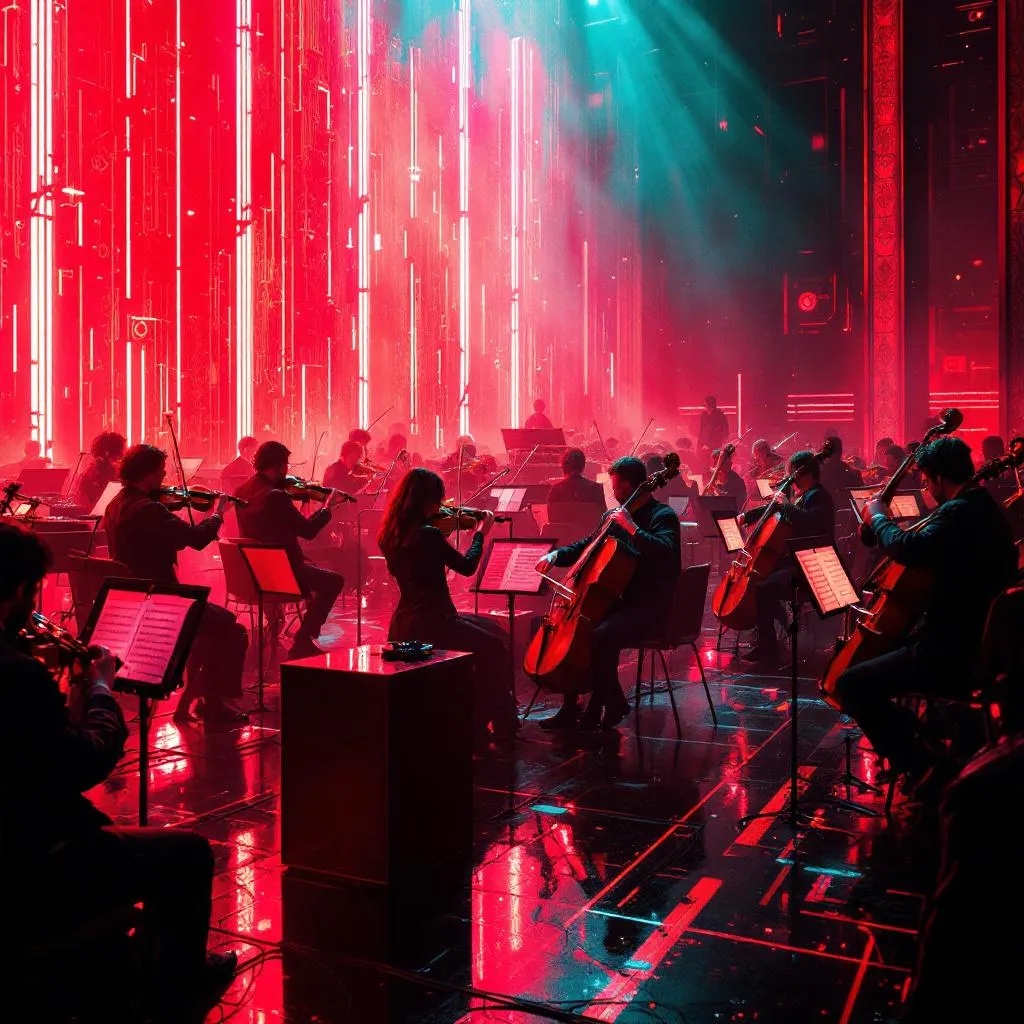
The Fusion of Orchestral Music and Trap Beats
The Fusion of Orchestral Music and Trap Beats
Combining orchestral music with trap beats creates a unique sound known as orchestral trap. This genre blends cinematic elements with energetic rhythms. Let’s explore its musical structure and how it can be visualized.
Musical Structure: Orchestra and Trap Beats
- Instruments: Orchestral elements like strings, brass, and woodwinds create lush soundscapes, while trap elements such as 808 bass, snares, and hi-hats deliver rhythmic intensity.
- Tempo and Rhythm: Trap beats typically range from a slow tempo of 70-80 BPM, often doubled for intricate hi-hat patterns. Syncopation and offbeat accents play a crucial role.
- Arrangement: Begin with a memorable orchestral melody, layer classic trap drums, introduce sliding 808 bass, and incorporate tension-building orchestral swells before impactful drops.
Visual Representation
- Circle Visualizer: Represent deep bass frequencies on the left and higher orchestral elements on the right, with central bars for melody and snare hits in warm and cool colors.
- Groove Visualization: Using a circular grid, visualize orchestral backgrounds and highlight trap drums through colored pulses, while a linear timeline shows the arrangement of builds and drops.
Example Workflow in a DAW
- Create an orchestral melody with strings and piano.
- Layer in brass and woodwinds for depth.
- Program a classic trap drum pattern with kicks, snares, and hi-hats.
- Add a sliding 808 bass for impact.
- Mix and arrange with dynamic builds and dramatic drops.
- Visualize the result with an audio visualizer to highlight energy and texture.
Further Exploration
For more insights on creating orchestral trap beats, check out these resources:
- Orchestral Trap Beat in FL Studio
- Explore tutorials on platforms like Sound Lab Beats and Bro Beatz for in-depth techniques.



